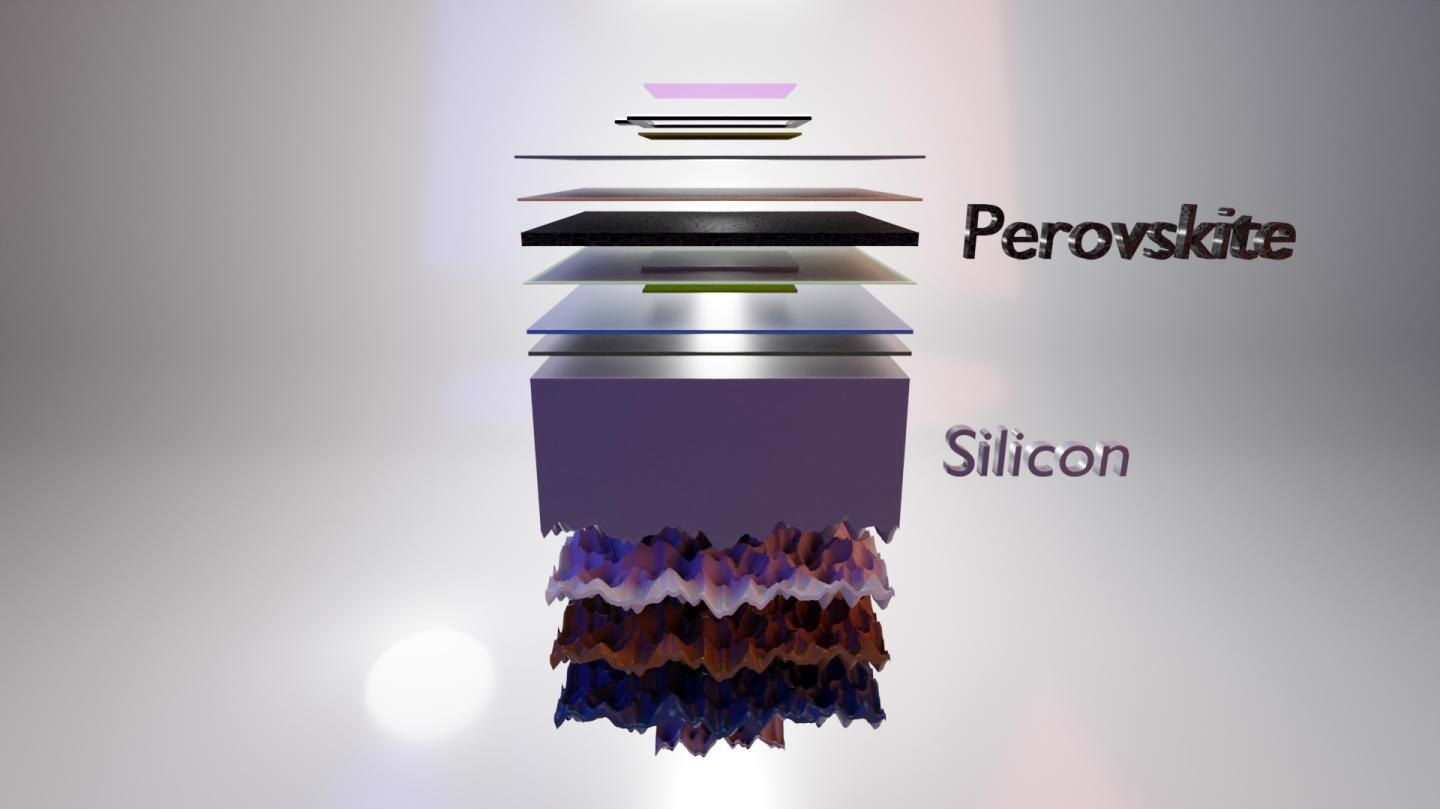Dec 11 2020
Significantly greater efficiencies can be achieved by solar cells containing a pair of semiconductors with varying bandgaps when used in combination, compared to individual solar cells on their own.
 The schematic structure of the tandem solar cell stack in 3D. Image Caption: Eike Koehnen/Helmholtz-Zentrum Berlin.
The schematic structure of the tandem solar cell stack in 3D. Image Caption: Eike Koehnen/Helmholtz-Zentrum Berlin.
This is because tandem cells make use of the solar spectrum in a more efficient way. Specifically, traditional silicon solar cells efficiently change the infrared components of light into electrical energy, whereas some perovskite compounds can effectively use the visible components of solar light, rendering this a robust combination.
At the start of 2020, a research team under the guidance of Professor Steve Albrecht from Helmholtz-Zentrum Berlin (HZB) set a new world record of 29.15% by breaking the earlier world record for tandem solar cells composed of silicon and perovskite (28.0%, Oxford PV).
Compared to the scientifically published and highest certified efficiency of 26.2%, this breakthrough represents a major advancement. The latest value is listed in the NREL chart and has been certified at Fraunhofer ISE. The results were recently published in the Science journal with an in-depth explanation of the fundamental physics and the fabrication process.
29.15% efficiency is not only the record for this technology but is at the very top of the entire Emerging PV category in the NREL chart.
Eike Köhnen, Study Co-First Author and PhD Student, Helmholtz-Zentrum Berlin
Köhnen is part of Albrecht’s group.
The novel perovskite/silicon tandem cell performs consistently during more than 300 hours under simulated solar light and constant exposure to the air without being shielded by encapsulation. The researchers used a complex perovskite composition with a bandgap of 1.68 eV and focused on improving the interface of the substrate.
With associates from Lithuania (the team of Professor Vytautas Getautis), the investigators designed an intermediate layer of organic molecules that autonomously organize themselves into a self-assembled monolayer (SAM).
This layer included an innovative carbazole-based molecule with the substitution of a methyl group (Me-4PACz). The researchers applied the SAM to the electrode and eased the flow of the electrical charge carriers.
“We first prepared the perfect bed, so to speak, on which the perovskite lays on,” stated Amran Al-Ashouri, also a member of Albrecht’s group and the co-first author of the study.
Subsequently, the team employed an array of complementary investigation techniques to examine the different types of processes at the interfaces between SAM, perovskite, and the electrode.
In particular, we optimised what is called the fill factor, which is influenced by how many charge carriers are lost on their way out of the perovskite top cell.
Amran Al-Ashouri, Study Co-First Author, Helmholtz-Zentrum Berlin
The electrons travel in the direction of solar light via the C60 layer, while the 'holes' travel in the reverse direction via the SAM layer into the electrode.
“However, we observed that the extraction of holes is much slower than electron extraction, which limited the fill factor,” added Al-Ashouri. But the novel SAM layer significantly expedited the transport of holes, thereby contributing to better stability of the perovskite layer.
Using a combination of modeling, photoluminescence spectroscopy, terahertz conductivity measurements and electrical characterization, the researchers were able to differentiate the numerous processes at the interface of the perovskite material and to establish the origin of major losses.
The study involved many associates, including the Kaunas University of Technology/Lithuania, the University of Potsdam, the University of Ljubljana, Slovenia and the University of Sheffield, United Kingdom. It also involved the Physikalisch-Technische Bundesanstalt (PTB), HTW Berlin, and the Technische Universität Berlin, where Albrecht holds a junior professorship.
Individual silicon and perovskite cells were investigated in the HZB laboratories, PVcomB and HySPRINT, respectively.
Each partner brought their own special expertise to the project, so we were able to achieve this breakthrough together.
Steve Albrecht, Professor, Helmholtz-Zentrum Berlin
The highest possible efficiency has already become a reality: the team studied both the cells separately and estimated a maximum potential efficiency of 32.4% for this new design.
“We can certainly achieve over 30%,” concluded Albrecht.
Journal Reference:
Al-Ashouri, A., et al. (2020) Monolithic perovskite/silicon tandem solar cell with >29% efficiency by enhanced hole extraction. Science. doi.org/10.1126/science.abd4016.